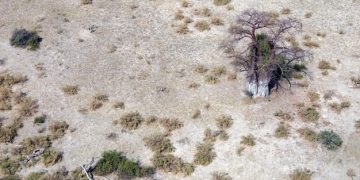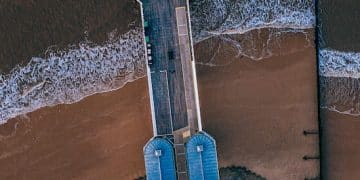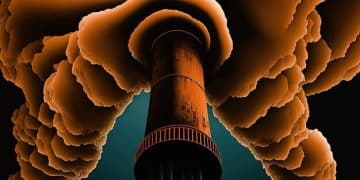US Infrastructure & Extreme Heat: 15% Increase Impact by 2025
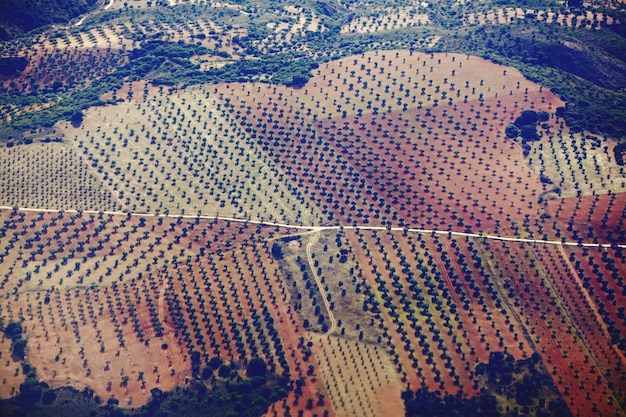
The projected 15% increase in extreme heat days by 2025 poses significant and multifaceted challenges to US infrastructure, threatening power grids, transportation networks, water systems, and urban resilience, necessitating urgent, proactive adaptation and mitigation strategies across all sectors to prevent widespread operational failures and economic disruption.
The United States is bracing for a dramatic environmental shift, with a projected 15% increase in extreme heat days by 2025. This isn’t merely an inconvenience; it represents a profound challenge to the very sinews of American society: its infrastructure. From the robust power grids that keep our lights on to the intricate transportation networks that move commerce and people, every vital system faces unprecedented stress. Understanding these potential impacts is crucial for adaptation.
The Power Grid Under Pressure: Capacity, Reliability, and Blackouts
The nation’s electrical grid, a complex interplay of generation, transmission, and distribution, is acutely vulnerable to rising temperatures. Heat exacerbates electrical resistance, leading to efficiency losses and increased wear on equipment. When temperatures soar, so does the demand for air conditioning, pushing grids to their operational limits.
Increased Demand and Peak Loads
Extreme heat directly correlates with spikes in electricity demand, primarily driven by cooling systems in residential and commercial buildings. This surge in demand often coincides with periods when generation and transmission infrastructure are already struggling under thermal stress.
- Cooling systems become less efficient, requiring more energy to maintain desired temperatures.
- Transformer and power line capacities are reduced due to overheating, leading to power loss.
- Generation plants, especially thermal and nuclear, may experience reduced efficiency or necessitate shutdowns.
Equipment Malfunctions and Failures
Heat shortens the lifespan of critical components like transformers, circuit breakers, and power lines. Sustained high temperatures can cause insulation to degrade, leading to shorts, outages, and potentially widespread blackouts. Older infrastructure, already near its operational limits, is particularly susceptible.
The cascading effect of one failure can quickly overwhelm interconnected systems. For instance, a transformer blowout in one area can force neighboring substations to carry additional load, pushing them beyond their capacity. Proactive maintenance and investment in heat-resistant materials are becoming not just recommendations, but necessities for grid resilience.
Preventative measures, such as enhanced cooling systems for substations and the replacement of older components, are essential. The grid needs to be thought of as a dynamic system, constantly adaptable to evolving thermal conditions. The transition to renewable energy sources, while beneficial for long-term climate goals, also presents challenges in managing intermittency during peak demand periods.
Transportation Networks: Roads, Rails, and Runways at Risk
The arteries of commerce and travel—roads, railways, and airports—are heavily impacted by extreme heat. Materials designed to withstand a certain range of temperatures begin to deform, crack, or buckle, leading to costly damage and travel disruptions.
Roadways and Asphalt Degradation
Asphalt, the primary material for most US roads, softens under intense heat, making it more susceptible to rutting, deformation, and cracking from heavy vehicle traffic. This accelerates wear and tear, leading to more frequent and expensive repairs.
- Pavements can buckle, creating dangerous driving conditions and limiting vehicle speeds.
- Increased maintenance costs and traffic delays due to emergency repairs become more common.
- The lifespan of road infrastructure is significantly reduced, necessitating earlier replacement cycles.
Railways: Buckling Tracks and Speed Restrictions
Steel rails expand significantly in high temperatures. When this expansion is constrained, tracks can buckle or warp, leading to “sun kinks” that can derail trains. To prevent this, railroads often impose speed restrictions, a measure that severely impacts freight and passenger schedules.
The economic repercussions of rail speed restrictions are considerable, delaying goods crucial for supply chains and impacting commuter reliability. Air travel also suffers; extreme heat reduces air density, requiring longer takeoff distances and potentially limiting aircraft payload or even grounding flights, especially at airports located at higher altitudes or those with shorter runways.
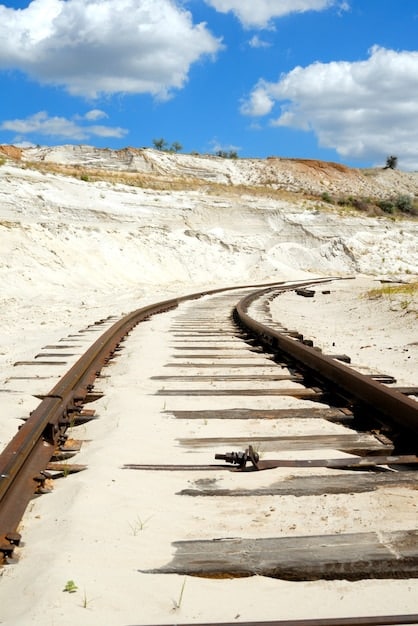
Ports and waterways also face indirect heat impacts. While not directly damaged by heat, the ripple effects on energy supply and transportation can disrupt their operations. Furthermore, increased evaporation due to heat can lower water levels in rivers and canals, impeding barge traffic.
Water Systems Under Stress: Supply, Quality, and Infrastructure
Water infrastructure, encompassing supply, treatment, and distribution, is profoundly affected by escalating temperatures. The challenges range from diminished water availability to direct damage to critical components, underscoring the interconnectedness of environmental and infrastructural systems.
Diminished Water Supply and Drought Conditions
Extreme heat accelerates evaporation from reservoirs, rivers, and lakes, directly reducing available freshwater supplies. This is particularly critical in drought-prone regions, magnifying water scarcity and placing immense pressure on agricultural, industrial, and municipal consumption.
- Reservoir levels drop, threatening drinking water supplies and hydroelectric power generation.
- Increased competition for dwindling water resources exacerbates inter-state and inter-sector conflicts.
- Groundwater reserves are depleted faster as surface water sources diminish, impacting long-term sustainability.
Impact on Water Quality and Treatment
Higher water temperatures can foster the growth of harmful algae blooms in reservoirs and lakes, degrading water quality and increasing the complexity and cost of treatment processes. Warmer water also holds less dissolved oxygen, impacting aquatic ecosystems and potentially leading to fish kills.
The infrastructure for water distribution, including pipes and pumping stations, can also be affected. While pipes are mostly underground and shielded from direct heat, the increased energy demand for pumping due to lower water pressure or greater distances (as reservoirs recede) places an added burden on the power grid, creating a feedback loop. Furthermore, extreme heat can crack or degrade surface-level components of water treatment plants, leading to operational inefficiencies.
The confluence of increased demand for water (e.g., for cooling systems in buildings) and reduced supply presents a critical challenge. Communities may face water use restrictions, impacting daily life, businesses, and public health. Investment in water conservation technologies, stormwater capture, and intelligent irrigation systems will become paramount to mitigate these effects.
Building Infrastructure & Urban Resilience: Material Degradation & Health Impacts
The urban fabric itself—buildings, public spaces, and the human systems within them—is not immune to the relentless assault of extreme heat. Material choices, architectural design, and urban planning come under scrutiny as cities struggle to maintain habitability and functionality.
Material Degradation and Structural Integrity
Many common building materials, such as concrete, steel, and roofing membranes, expand and contract with temperature fluctuations. Repeated and intense heat cycles can accelerate material fatigue, leading to cracks, warping, and reduced structural integrity over time. This is especially true for flat, dark-colored roofs that absorb a significant amount of solar radiation.
- Roofing materials degrade faster, requiring premature replacement and increasing building energy consumption.
- Expansion joints in pavements and bridges are overstressed, leading to compromised structural elements.
- Exterior finishes and sealants become brittle, reducing envelope efficiency and increasing maintenance.
Urban Heat Island Effect Amplification
The “urban heat island” (UHI) effect, where cities are significantly warmer than surrounding rural areas due to heat-absorbing surfaces and heat-emitting activities, is amplified by extreme heat days. This intensifies the heat burden on city residents and infrastructure, creating a dangerous cycle.
Public spaces, parks, and sidewalks become less usable during peak heat, impacting community life and commerce. The increased need for indoor cooling also strains both individual household budgets and the overall electricity grid. Beyond the physical structures, human health is a critical concern, with heat-related illnesses and fatalities increasing during heatwaves, particularly among vulnerable populations.

Strategies for enhancing urban resilience include promoting green infrastructure (e.g., green roofs, urban forestry), incorporating cool pavements and reflective surfaces, and designing buildings with passive cooling techniques. Developing effective early warning systems for heatwaves and ensuring access to cooling centers are also crucial public health infrastructure components.
Communication Networks & Digital Infrastructure: Overheating and Data Loss
In an increasingly connected world, the reliability of communication networks and digital infrastructure is paramount. Extreme heat poses direct and indirect threats to data centers, cell towers, and fiber optic cables, risking widespread service disruptions and data loss.
Overheating of Critical Components
Data centers, which house vast arrays of servers and networking equipment, generate significant heat themselves. When ambient temperatures rise, their elaborate cooling systems are pushed to their limits, consuming enormous amounts of energy. If cooling fails or is insufficient, equipment can overheat, leading to performance degradation, data corruption, and catastrophic system failures.
- Servers can shut down automatically to prevent damage, causing service interruptions and downtime.
- Increased energy consumption for cooling drives up operational costs and strains local power grids.
- Fires due to overheating components become a higher risk, endangering valuable data and infrastructure.
Impacts on Cell Towers and Fiber Optics
Cell towers, exposed to direct sunlight, can experience overheating in their electronic components, leading to dropped calls or reduced service reliability. Fiber optic cables, while less susceptible to temperature changes than copper, can still be affected by extreme heat when installed in conduits or near surfaces that expand and contract, potentially leading to micro-bends or breaks.
The interconnectedness of modern life means that failures in communication infrastructure have broad societal implications, affecting emergency services, financial transactions, and daily communications. Redundant systems and enhanced cooling technologies are essential, but their implementation comes with significant costs. Furthermore, the reliance on an already stressed power grid for cooling these facilities creates a dependency that can exacerbate vulnerabilities during heatwaves.
The digital age requires not just robust, but resilient infrastructure that can withstand escalating environmental pressures. Strategic placement of new data centers in cooler regions, investment in advanced cooling technologies (like liquid cooling), and decentralized data storage solutions can contribute to mitigating these risks.
Preparedness and Adaptation: Building a Resilient Future
As the projected increase in extreme heat days by 2025 looms, proactive preparedness and strategic adaptation are no longer optional but imperative. The multifaceted impacts on US infrastructure demand a comprehensive, coordinated approach involving policy, investment, and innovation.
Policy Development and Regulatory Frameworks
Effective adaptation begins with robust policy and regulatory frameworks that integrate climate resilience into infrastructure planning and development. This includes updating building codes to account for higher temperatures, mandating climate risk assessments for new projects, and incentivizing green infrastructure solutions.
- Establishing climate resilience standards for critical infrastructure sectors.
- Developing funding mechanisms for climate adaptation projects at federal, state, and local levels.
- Promoting inter-agency coordination to address cross-sectoral impacts of extreme heat.
Investment in Resilient Infrastructure
Significant financial investment is required to upgrade, reinforce, and redesign existing infrastructure and to construct new, heat-resilient systems. This includes hardening power grids, developing heat-friendly transportation materials, and implementing innovative water management strategies.
Research and development of new materials and technologies that perform better under extreme heat conditions are crucial. For example, developing asphalt mixes that resist softening, or advanced power transmission lines that can operate efficiently at higher temperatures. Furthermore, cities must invest in “cool infrastructure” solutions such as reflective roofing, cool pavements, and expanded urban tree canopies to combat the urban heat island effect.
Beyond physical upgrades, investing in early warning systems and public health infrastructure to protect vulnerable populations from heat-related illnesses is essential. This holistic approach ensures that adaptation strategies encompass not just the physical structures but also the human element.
Community Engagement and Public Awareness
Ultimately, a resilient future also depends on informed and engaged communities. Public awareness campaigns can educate citizens on the risks of extreme heat and actions they can take to conserve energy and water, reducing the burden on infrastructure. Community-level planning can identify local vulnerabilities and develop tailored resilience strategies.
Encouraging individual and household preparedness, such as understanding local cooling center locations and heat safety guidelines, complements large-scale infrastructure investments. Building a culture of preparedness means recognizing extreme heat as a persistent and growing threat that requires collective action from all levels of society.
| Key Impact Areas | Brief Description |
|---|---|
| ⚡ Power Grid Strain | Increased demand for AC, reduced efficiency, and greater risk of equipment failure resulting in blackouts. |
| 🛣️ Transportation Disruption | Road asphalt softening, rail track buckling, and air travel limitations due to heat-affected materials. |
| 💧 Water System Pressure | Accelerated evaporation, diminished supply, and water quality issues affecting treatment. |
| 🏙️ Urban/Digital Strain | Material degradation in buildings, amplified urban heat island effect, and data center overheating risks. |
Frequently Asked Questions
▼
Extreme heat increases electricity demand for cooling while simultaneously reducing the efficiency and capacity of power generation and transmission infrastructure. This dual challenge heightens the risk of equipment malfunctions, localized blackouts, and widespread grid instability, particularly during peak usage periods.
▼
High temperatures can cause asphalt roads to soften and deform, leading to rutting and cracking. Steel railway tracks can buckle (“sun kinks”), forcing speed restrictions. Additionally, reduced air density at airports can necessitate longer takeoffs or limit aircraft payloads, disrupting travel and commerce.
▼
Extreme heat accelerates evaporation from reservoirs and rivers, reducing available freshwater supplies and exacerbating drought conditions. Warmer water temperatures also promote harmful algae blooms, degrading water quality and increasing the complexity and cost of treatment processes for municipal systems.
▼
Building materials face accelerated degradation from repeated heat cycles, affecting structural integrity and energy efficiency. The urban heat island effect will intensify, making cities significantly hotter and straining cooling systems. This impacts habitability, public health, and increases maintenance costs for urban infrastructure.
▼
Preparation involves upgrading power grids with heat-resilient components, developing heat-tolerant construction materials for roads and buildings, and implementing advanced water management strategies. Policy development, significant investment in green infrastructure, and public awareness campaigns are also crucial for building comprehensive resilience.
Conclusion
The projected 15% increase in extreme heat days by 2025 presents a formidable challenge to the United States’ infrastructure. From the foundational elements of its power grid and transportation networks to vital water and communication systems, every sector faces heightened risks of operational failure, accelerated degradation, and significant economic strain. Addressing these vulnerabilities requires a concerted, multi-pronged approach that integrates innovative engineering, forward-thinking policy, and substantial investment. By prioritizing resilience and adaptation now, the nation can work towards mitigating the most severe consequences, safeguarding essential services, and ensuring a more stable and sustainable future in an increasingly warmer climate.


